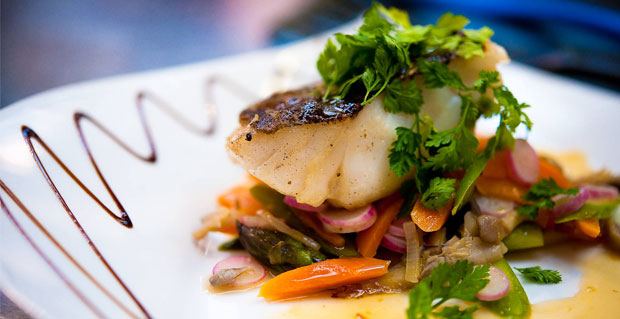Have you noticed how the food on the supermarket’s ready meal’s packaging always looks far more delicious than the end product when it reaches your plate?
This is largely down to the use of lighting. Light is an essential aspect of photography – in fact, the word ‘photography’ literally means ‘writing with light’ – and it is manipulated to great effect by food photography specialists.
The positioning and angle of the light source will affect the shadow contrast on the subject. The quality of the light – which can be diffused (soft) or specular (hard) depending on the source – will also influence how the food looks. So the food photographer will adjust the scene until the food is presented in the best possible light, literally. And without kitting out your kitchen with studio lights, you’re unlikely to ever recreate that picture on the packet.
Lights aren’t just used in photography studios to enhance food’s appearance. Supermarkets use electric lighting to enhance their food displays; the better it looks, the more units they shift. LED lighting company Nualight specialises exclusively in food retail displays and they believe that as well as enhancing the food’s appearance, LED technology is more efficient and saves the supermarkets money: “Refrigerated systems contribute to more than 50% of the average supermarket’s energy bill. Nualight’s LED lighting can reduce the energy consumption of lighting in food displays by up to 65%, delivering significant commercial and environmental benefits to food retailers.”
There are fun ways of lighting your food too. The next time you’re throwing a dinner party, for instance, why not serve up some glow in the dark jelly? Imagine the looks on your guests’ faces when you turn out the lights and the jelly lights up! They won’t forget that image no matter how many gin and tonics they’ve had. In fact, tonic water is the key ingredient to a glowing jelly. It contains a fluorescent compound called quinine which makes the jelly glow, so just add tonic instead of water and use a UV light to enhance the illumination!
Of course, light has another connection with food, and one which is far more crucial than simply making food look tasty. Without light, or sunlight specifically, crops couldn’t grow in the first place. Worryingly, however, the combination of the world’s ever-growing human population and its diminishing resources means that we may not be able to rely on sunlight forever.
Fortunately, Netherlands-based company PlantLab has found a way of harnessing LED technology to aid plant growth. Plants normally absorb sunlight, but they actually need just a small portion of the full light spectrum, and too much light leads to dehydration. By using red and blue LED lights instead, it is possible to encourage growth and do so in a far more resourceful manner.
So whether you want to make your jelly glow or make your vegetables grow, LED lighting is the sure-fire ingredient in the recipe for success.
Date: September 5, 2012
Tags: led LED Lighting leds light
Supermarkets use electric lighting to enhance their food displays; the better it looks, the more units they shift.




